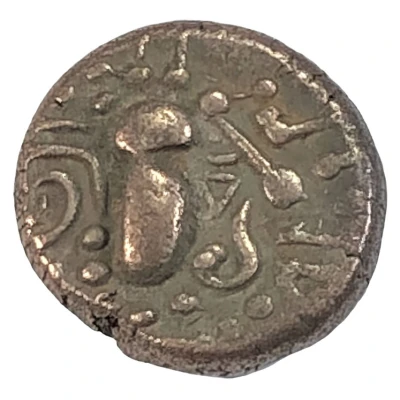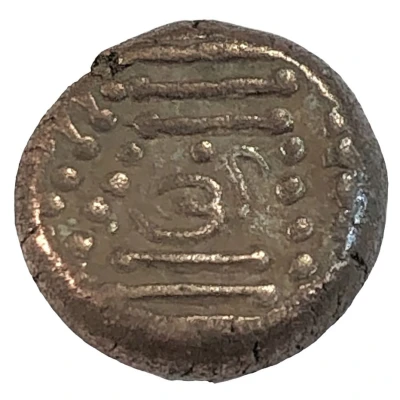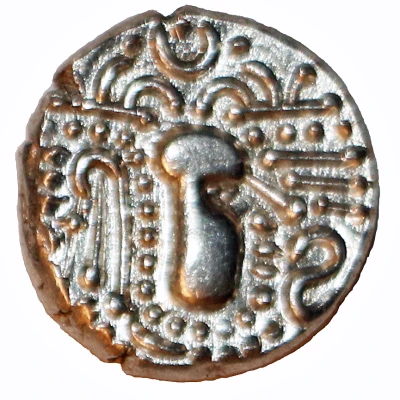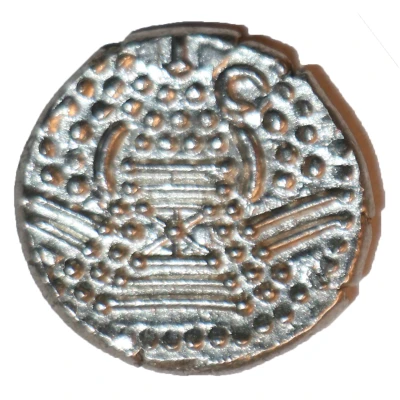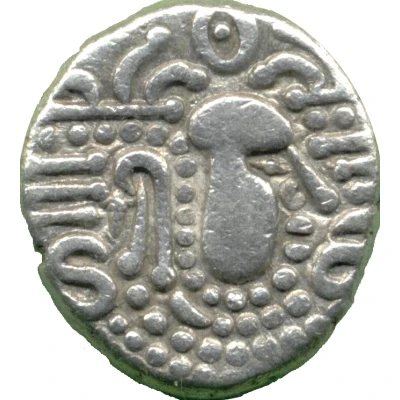
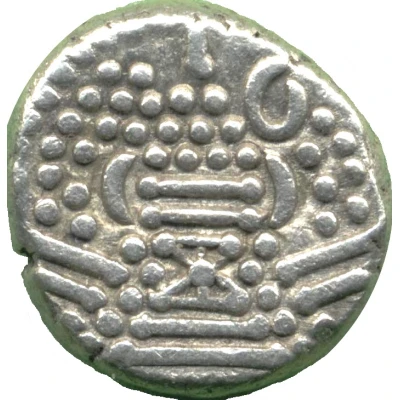

Gadhaiya paisa, Paramara ND
| Billon | 4.22 g | 14 mm |
| Issuer | Gadhaiya (Indian Northern Dynasties) |
|---|---|
| Type | Standard circulation coin |
| Years | 950-1050 |
| Value | 1 Drachm |
| Currency | Drachm (543-1390) |
| Composition | Billon |
| Weight | 4.22 g |
| Diameter | 14 mm |
| Thickness | 2.5 mm |
| Shape | Round (irregular) |
| Demonetized | Yes |
| Updated | 2024-10-05 |
| Numista | N#38271 |
|---|---|
| Rarity index | 36% |
Reverse
Stylised fire altar; pellets around.
Edge
Plain
Comment
Indo-Sassanian Gadhiya paisa coins are degenerates of Sassanian silver coins which circulated in Afghanistan and India from the 8th to 11th centuries. These coins are referred as Indo-Sassanian for combining Indian characters with the Sassanian types. Some derive the word Gadhiya from the Ghardabhiya dynasty-which is an Indo-Sassanian family of that name, subsequent to the year 420 A.D. The design of the coin was based on the Sassanian fire altar that was produced about 300 years earlier (Chavda dynasty).Throughout Sassanid history a freestanding fire-altar was given a prominent place on coinage.
Interesting fact
One interesting fact about the Gadhaiya paisa coin is that it was made of billon, which is an alloy of silver and other metals, typically copper or bronze. The use of billon in coinage was common in ancient India, as it was a more affordable alternative to pure silver. Despite being made of a less valuable material, the Gadhaiya paisa coin still holds significant historical and cultural value, providing insight into the economic and monetary systems of the Paramara dynasty that ruled over the Gadhaiya region in the 10th century.
Price
| Date | Mintage | VG | F | VF | XF | AU | UNC |
|---|---|---|---|---|---|---|---|
| ND (950-1050) | - | - | - | - | - | - |
Values in the table are based on evaluations by sales realized on Internet platforms. They serve as an indication only for Gadhaiya paisa, Paramara ND (950-1050) coin.
